Discover Jura, Scotland’s wild island – two ferries, three peaks and epic views
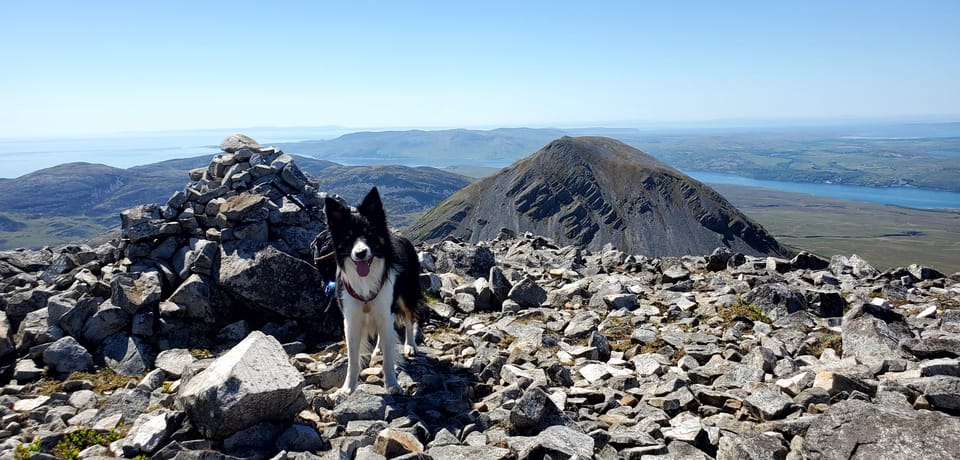
I’VE heard Jura described as “a hidden gem”, which is a wee bit odd.
The distinctive outlines of the Inner Hebridean island’s mountains – the Paps of Jura – are visible from all over the west coast. Jura is anything but hidden.
It is very hard to reach though.
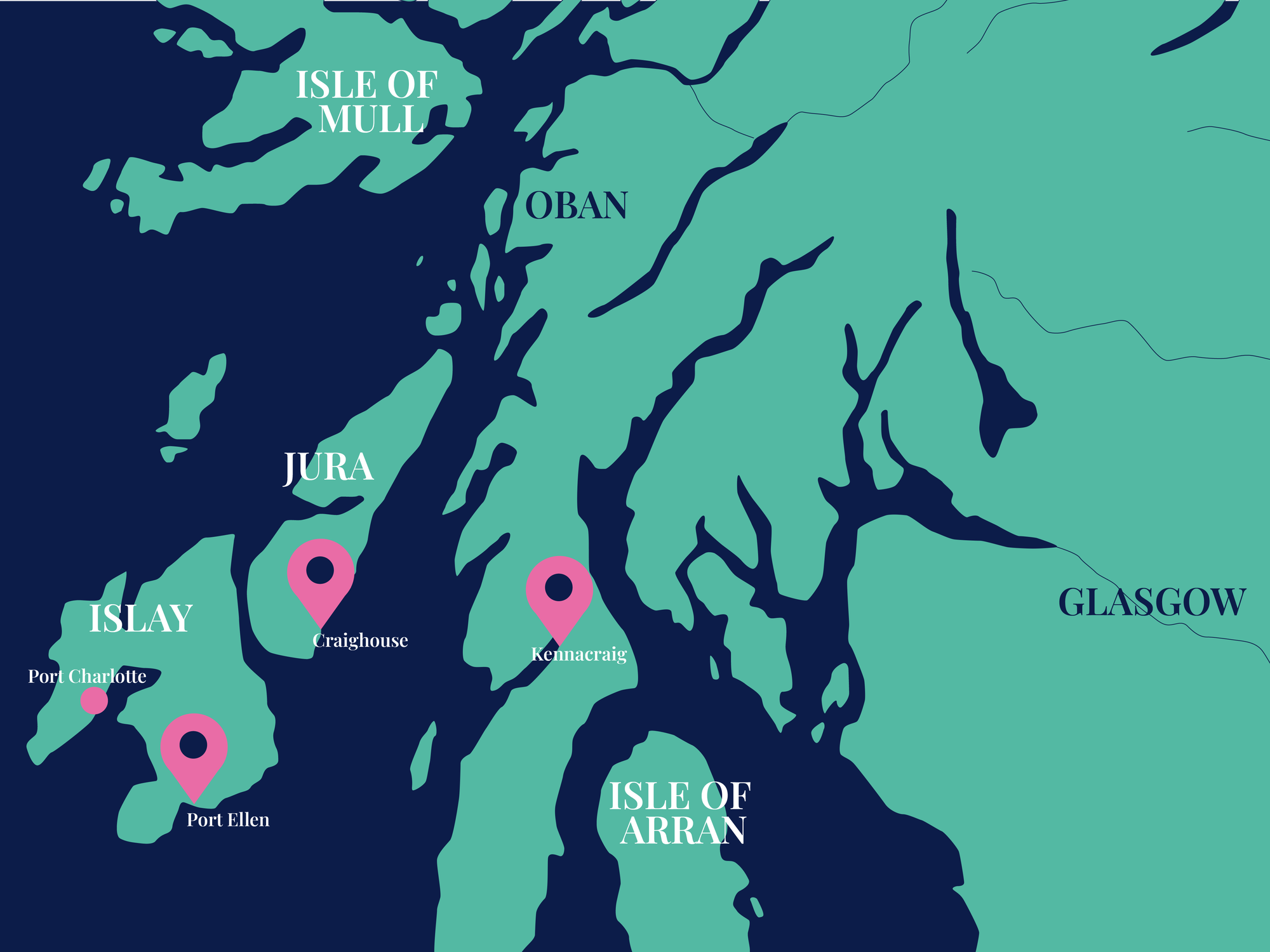
Anywhere that requires two ferries to get to earns the tag “remote”. To reach Jura, first you sail to Islay – two-hours, twenty-minutes from the Argyll port of Kennacraig.
Two ferries, one wild island
A second boat takes you across the Sound of Islay to Jura. The narrow channel of water separates the islands by just a few hundred yards – but they are worlds apart.
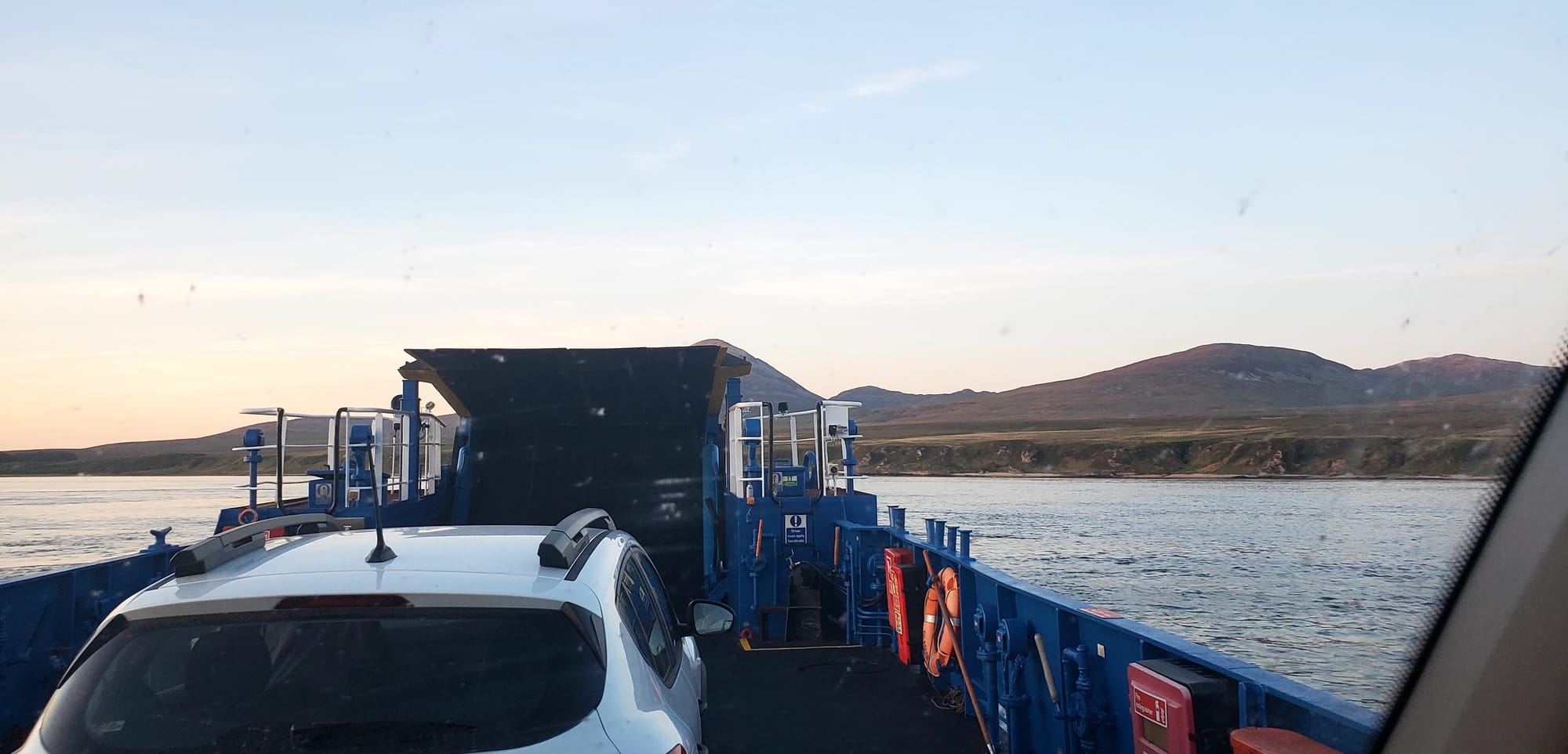
Rugged Jura has a wild aura – raw and untamed, with a single, narrow road running along its east coast. It’s home to several thousand red deer and a couple of hundred hardy souls.
A nod to civilisation is provided by the Jura Hotel, conveniently located opposite the Isle of Jura Distillery Co.
With its clutch of scree-strewn mountains, vast bogs and heather-coated hills, Jura feels like frontier country – a place where nature is still in charge. It even has a whirlpool, in the Gulf of Corryvreckan, off the north shore.
Mountains and wild whirlpools
This violent maelstrom is the third largest whirlpool on the planet. What could be wilder than that?!
What brought me to Jura were the mountains.
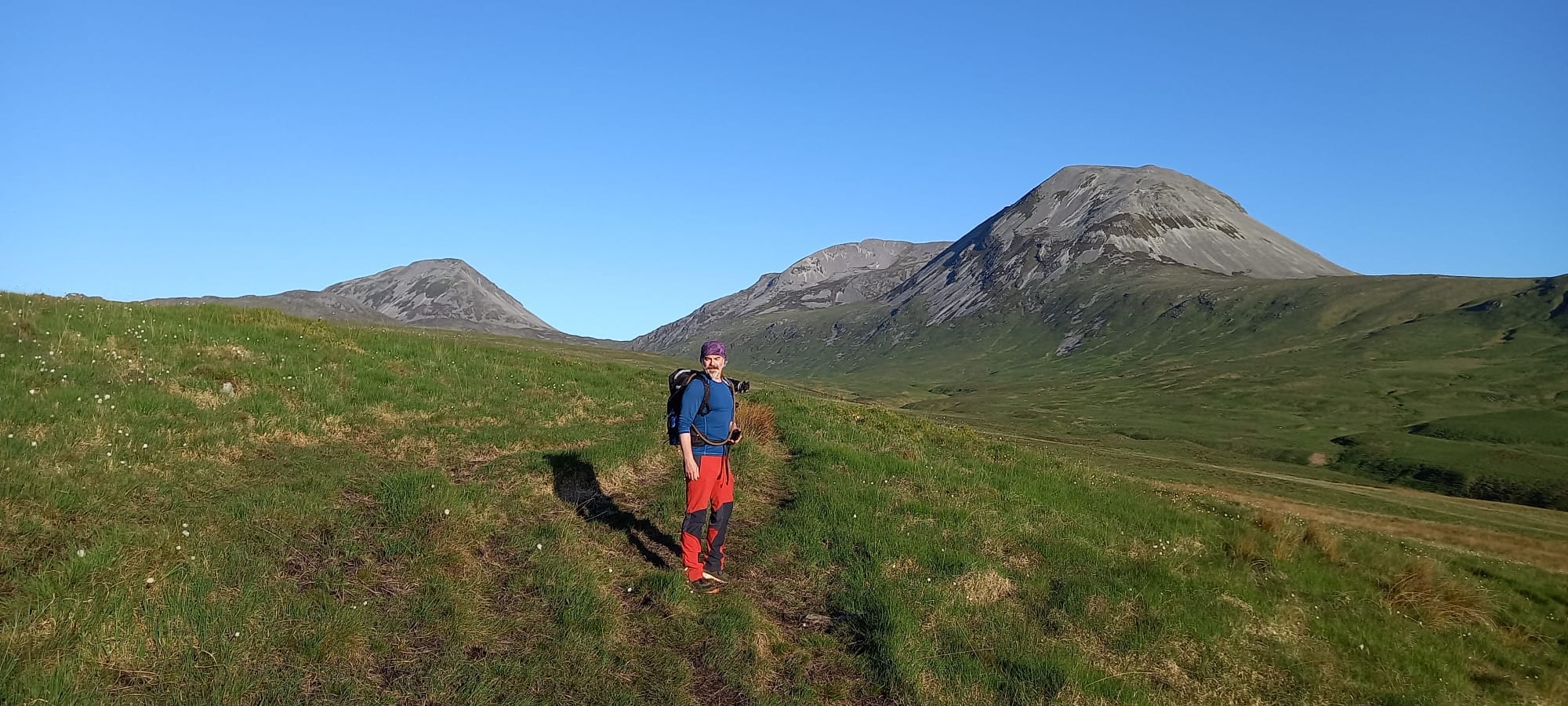
I’m slowly working my way through the list of Corbetts. These are Scottish mountains between 2,500 and 2,999ft. As most will know, anything 3000ft and more is classed as Munro.
It’s a fantastic way of exploring the country. I’ve been to places I’d never otherwise go. And I much prefer Corbetts to the Munros. They’re quieter, often more challenging, many seldom visited and pathless.
Chasing the Paps of Jura
The Paps of Jura are so-named because – and there’s no delicate way of putting this – they look like breasts, from most viewpoints at least.
There are in fact three hills – the highest just scrapes into the Corbett list at 2,580ft (785m). It’s called Beinn an Oir – which translates to “hill of gold”.
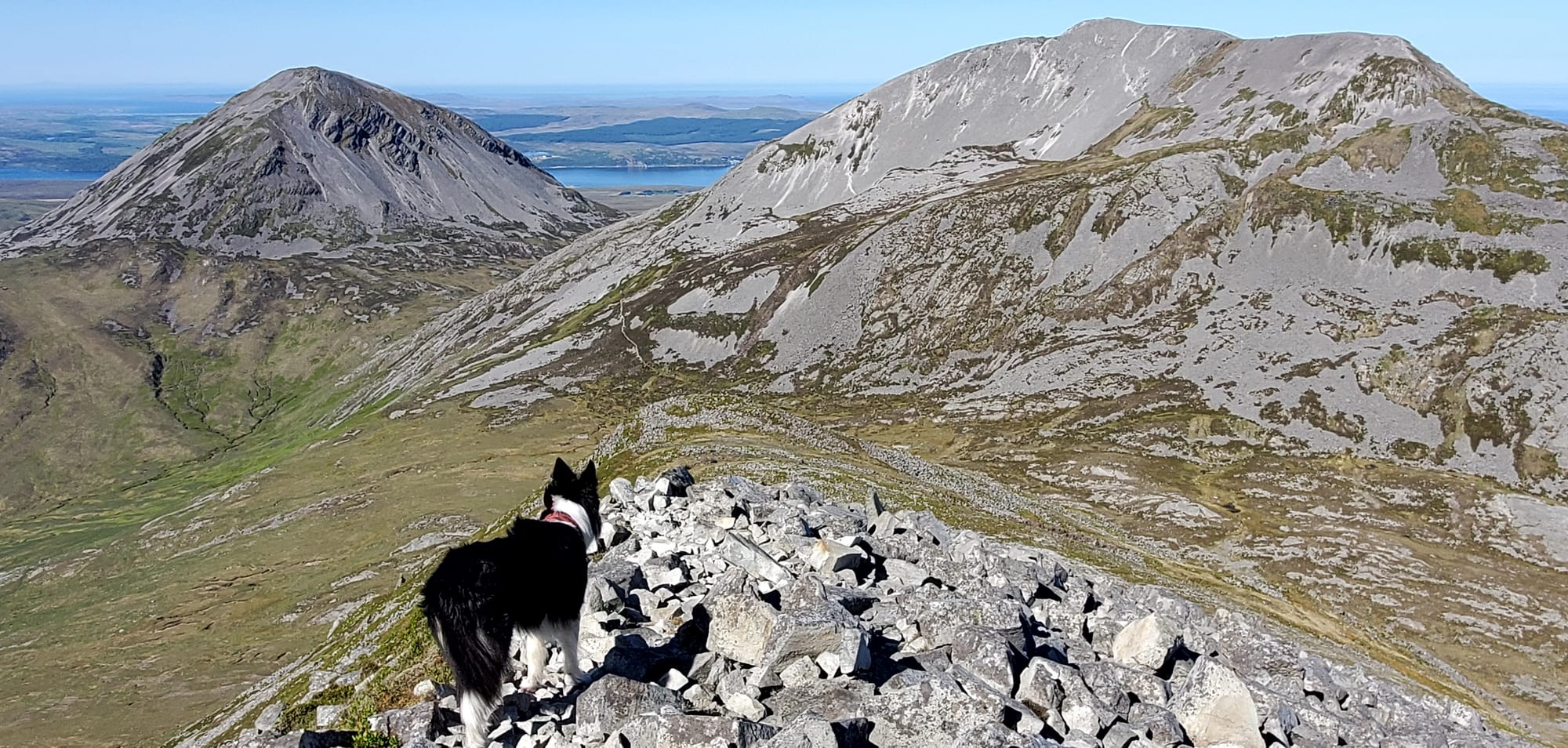
The classic route is to walk all three. And although they’re not the biggest hills, they’re among the toughest in the land.
The full round is just over 10-miles (16km) but involves 4,600ft (1400m) of ascent. You climb from near sea-level on difficult, scree-filled terrain. It can take a fit walker 10 hours to complete.
Earlier this year the hill gods smiled with something like a planetary alignment – my time off coincided with my hill buddy Ron’s availability and a settled spell of high pressure.
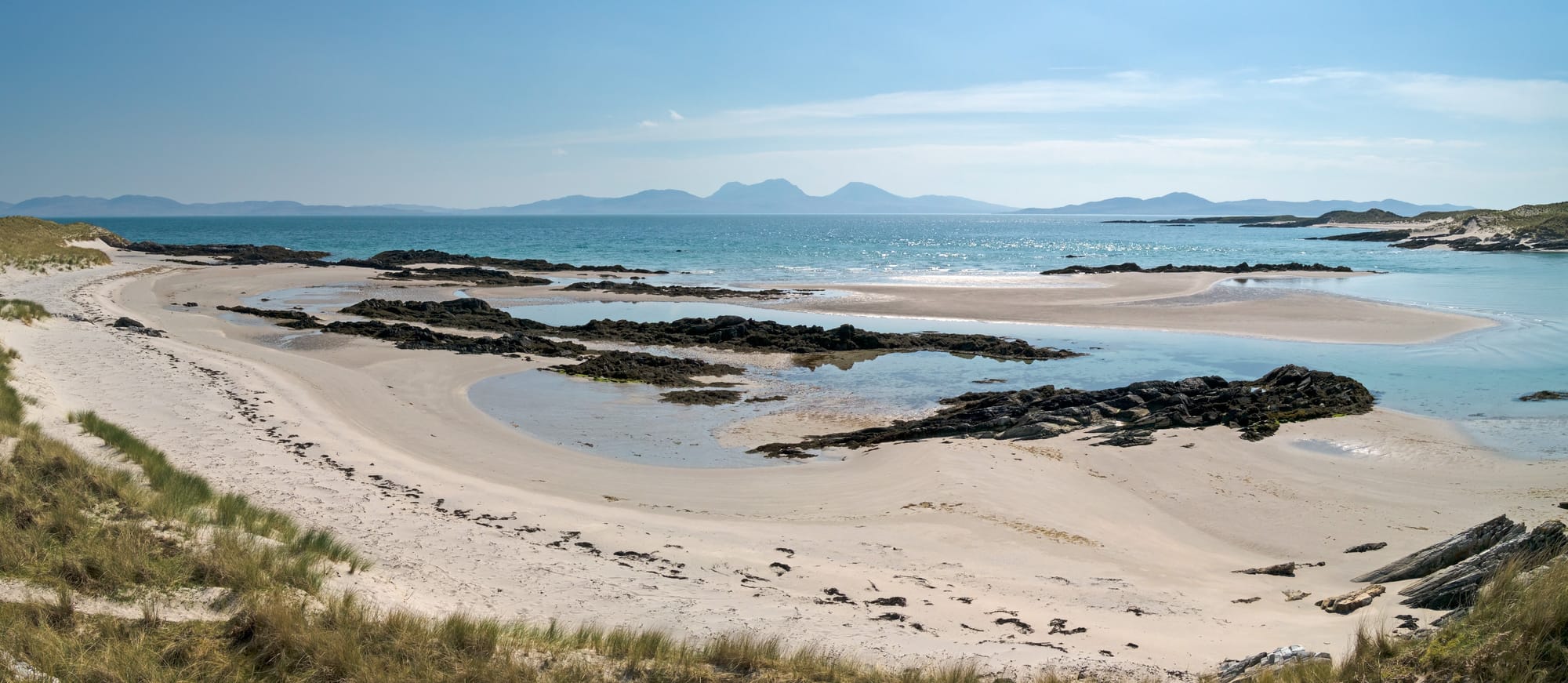
We quickly made arrangements. Islay would be our base. We booked three nights at Port Mòr Campsite, me and Storm the collie in our campervan, Ron in a tent.
We’d sail over on Thursday evening, get the first ferry to Jura next day, climb the hills, return to Islay, eat, drink, sleep and enjoy another day exploring the island before heading home on Sunday. Simple. Or so it seemed.
Leave the real world behind
Normally on a hill trip, especially to the islands, the journey is part of the pleasure. There’s a slow stripping away of the concerns and tedium of everyday life.
On the drive there, you begin to relax. You stop thinking about work, your to-do list, and start to focus instead on the adventure ahead.
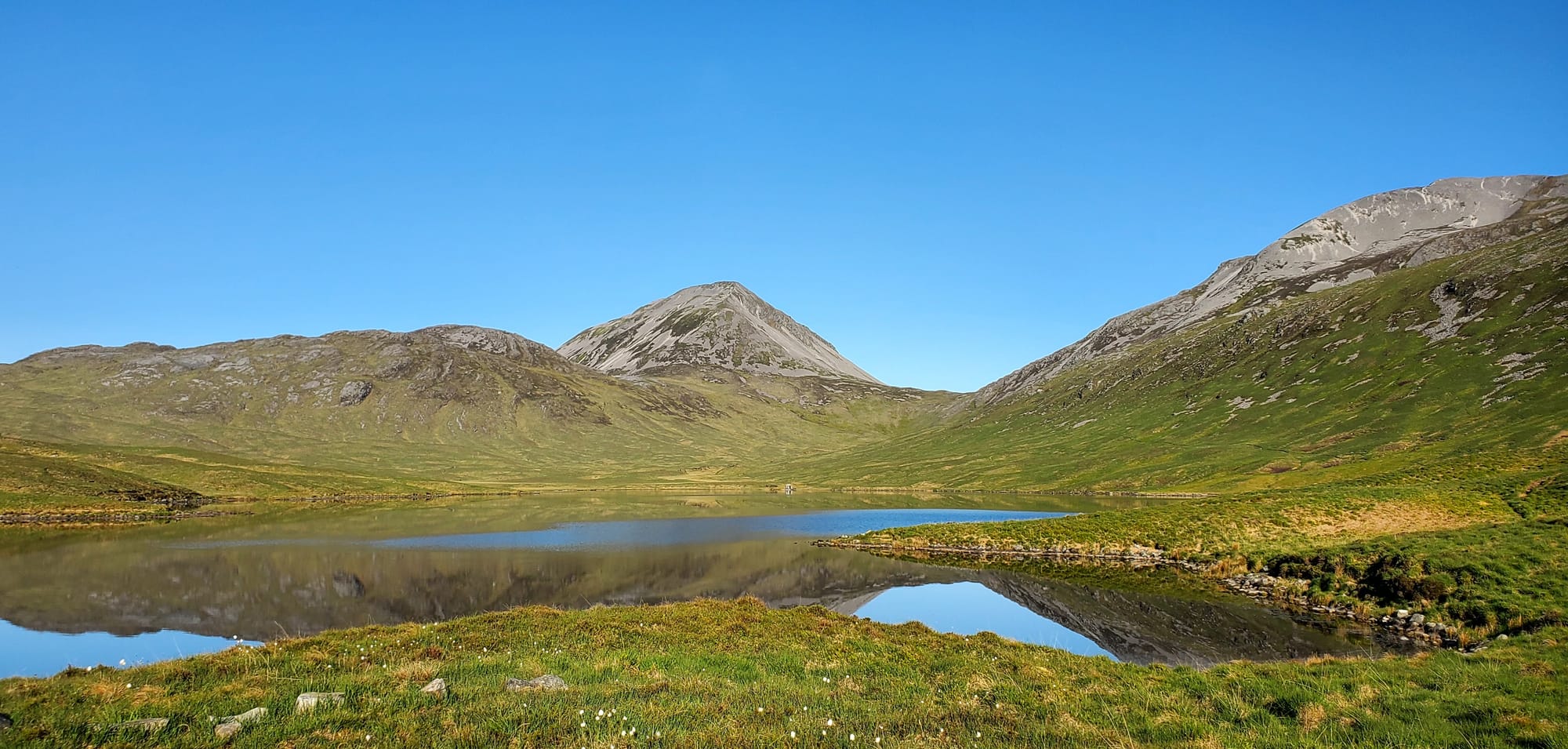
And there’s something about a ferry – the slow journey across the water, the lazy thrum of the engines, watching dolphins surf the boat’s wake. It’s calming, and feels like a proper escape.
You leave behind the real world as the mainland sinks beneath the horizon.
Camping strips things back further. Life becomes all about the basics – where to sleep, simple comforts, food, good company.
A campervan cup of tea
It’s the ultimate antidote to modern life. And by the time you find yourself sitting on top of a mountain, you’re certainly not thinking about that electricity bill.
The three and a bit hour drive from my home in the Trossachs to Kennacraig went as planned. But at the ferry terminal, we spotted a last sailing to Jura at 21:15.
We were due into Islay’s Port Ellen at 20:20, so changed our plans and headed straight for Jura.
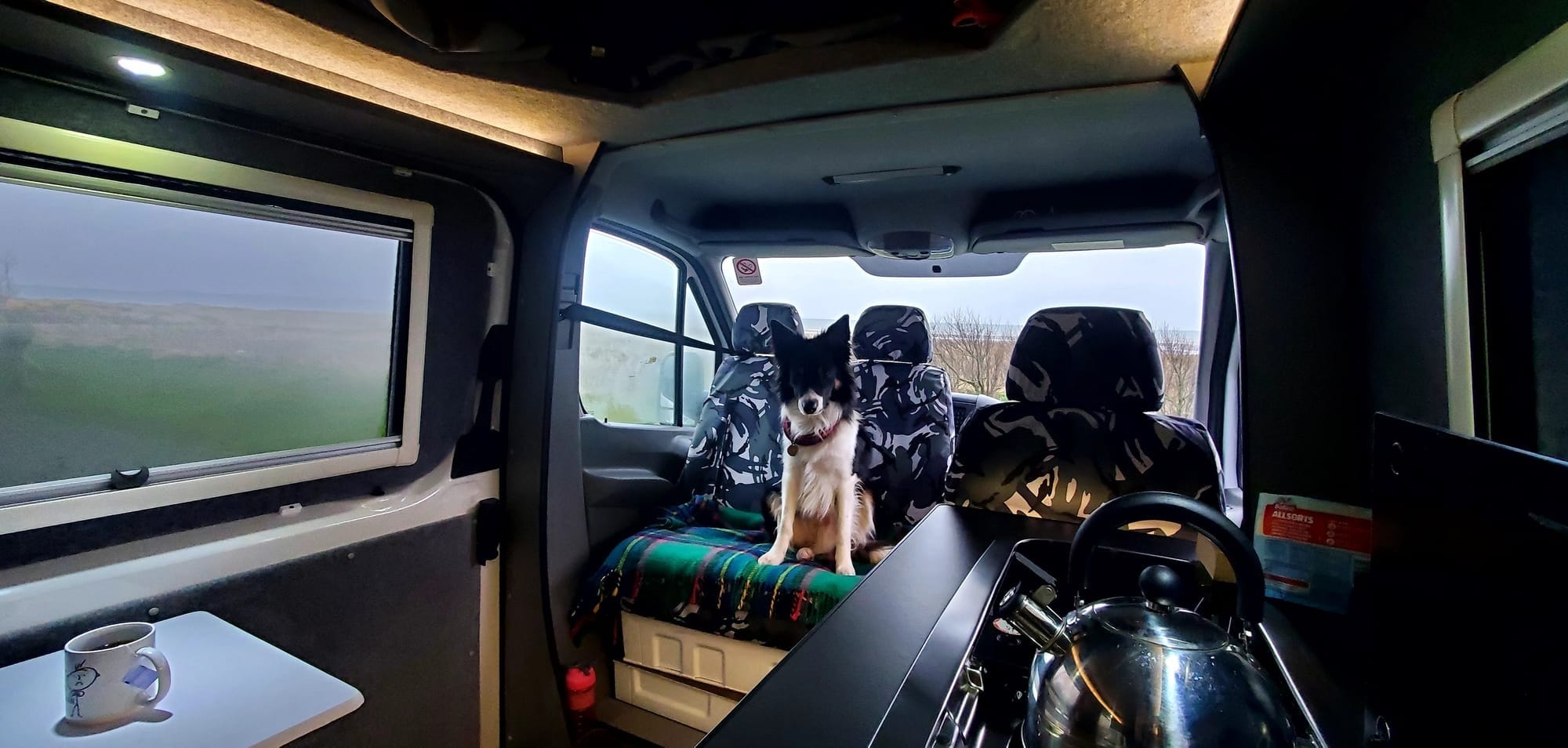
Docking at 20:30 with 21 miles to cover to Port Askaig and the Jura ferry, we decided to go for it and breathed a sigh of relief when we arrived with minutes to spare.
A race for the last ferry
Our smugness was short-lived. The council-run ferry is advertised as “turn up and pay”, but the woman in the car in front – a Jura resident from Australia – explained that the first and last ferries must be booked a day in advance.
And if the day included an early ferry there’d be no late ferry, and vice-versa. Confused? We were. And the info on the council website isn’t the easiest to find.
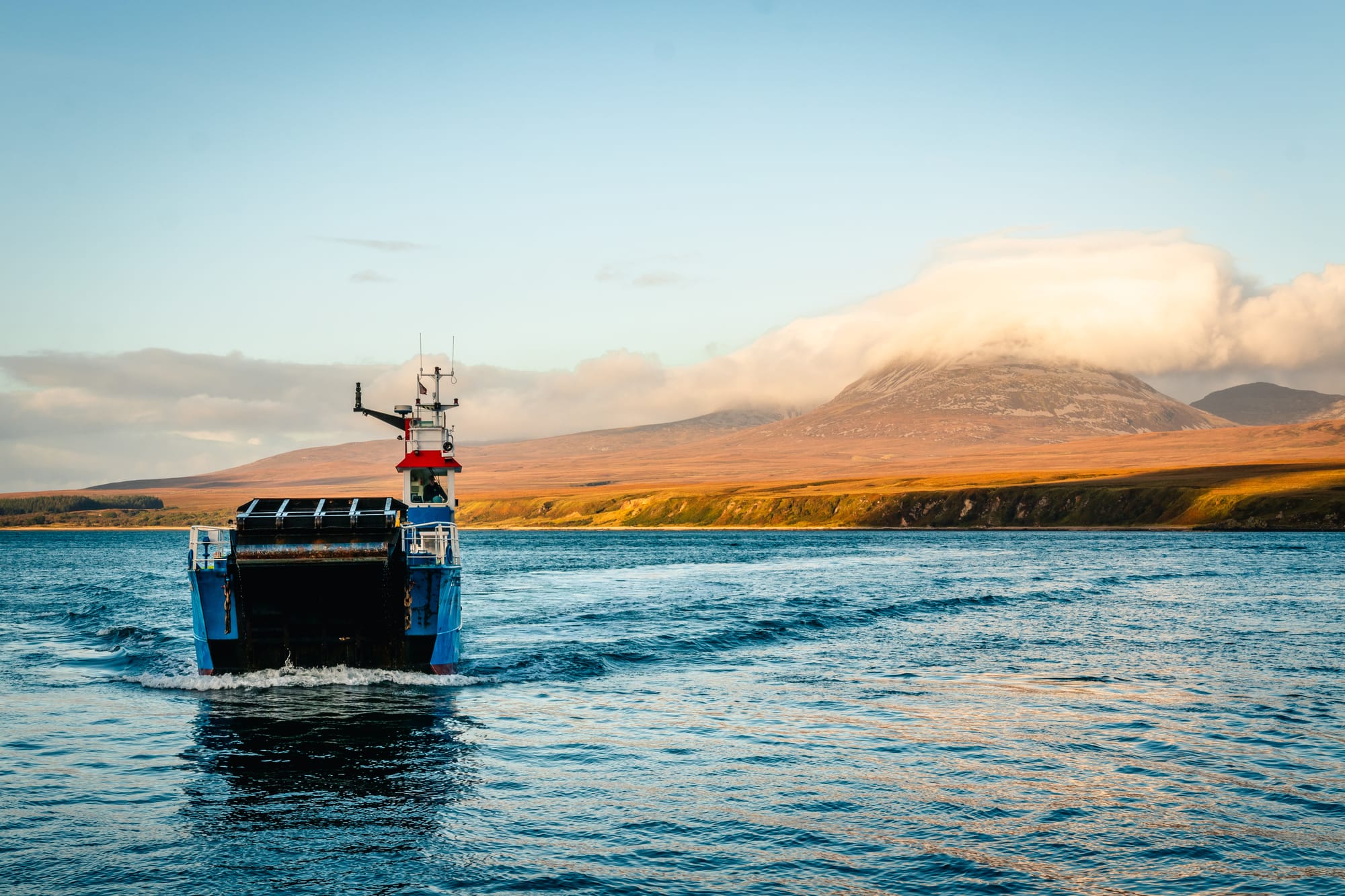
The crew, we were told, might let us on... but they might not. When the ferryman arrived, we pleaded our case. “There’s nobody else booked aboard”, he said in that west-coast island drawl, the vowels stretching as long as the summer days.
“Ach well lads, it’s your lucky day”
Soon, we were pulling up in the small parking spot at the start of the walk and bedded down for the night.
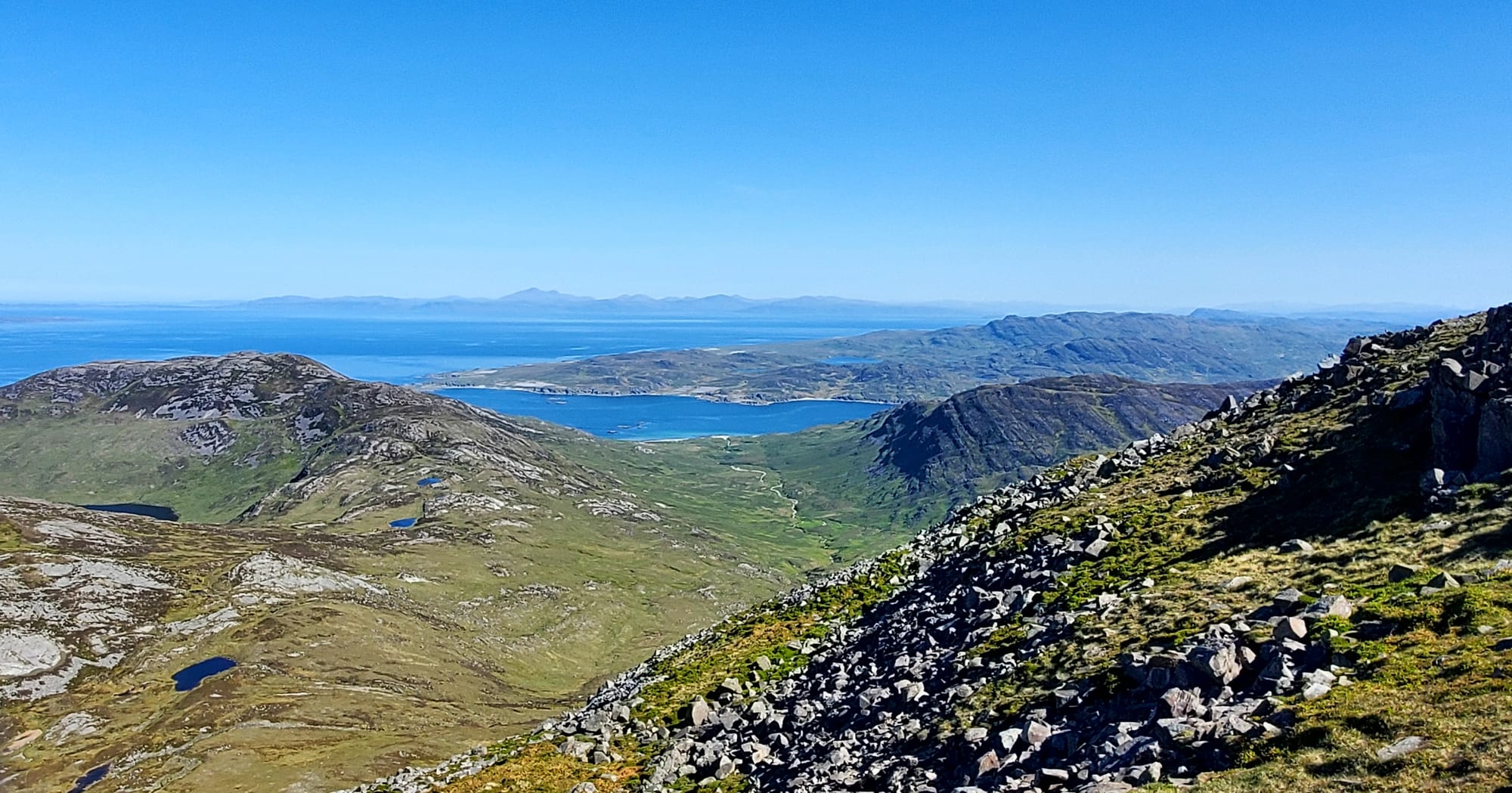
We arose early – and had our first encounter with Jura’s midgies. My goodness they’re ferocious. Living in the Trossachs I imagined I’d become, if not immune, then certainly inured to these biting beasties. Not a bit of it.
Midgies, scree and sunshine
These Jura varieties are so big and fearsome I swear two of them near carried off poor Storm. Pretty savage altogether. The morning was clear and bright, and soon warm, with temperatures set to hit the mid-20s.
My pack felt heavy as we trudged over spongy ground. Normally a soaking bog, it’d dried out considerably after a long period without rain.
There would be little chance of any water on the hill, so I carried three litres, plus 500ml of coconut water – perfect on a day when you need to replace electrolytes. I’d packed for Storm too – experience tells me he’ll drink roughly half of what I do.
Bring on the pork pies!
I also carried a fair bit of food – sardines for Storm, porkpies, cheese, nuts and chocolate for me. On big days you need calories – fat, protein and salt. It’s strange the more you exert yourself, the less you want to eat, so you need food you enjoy.
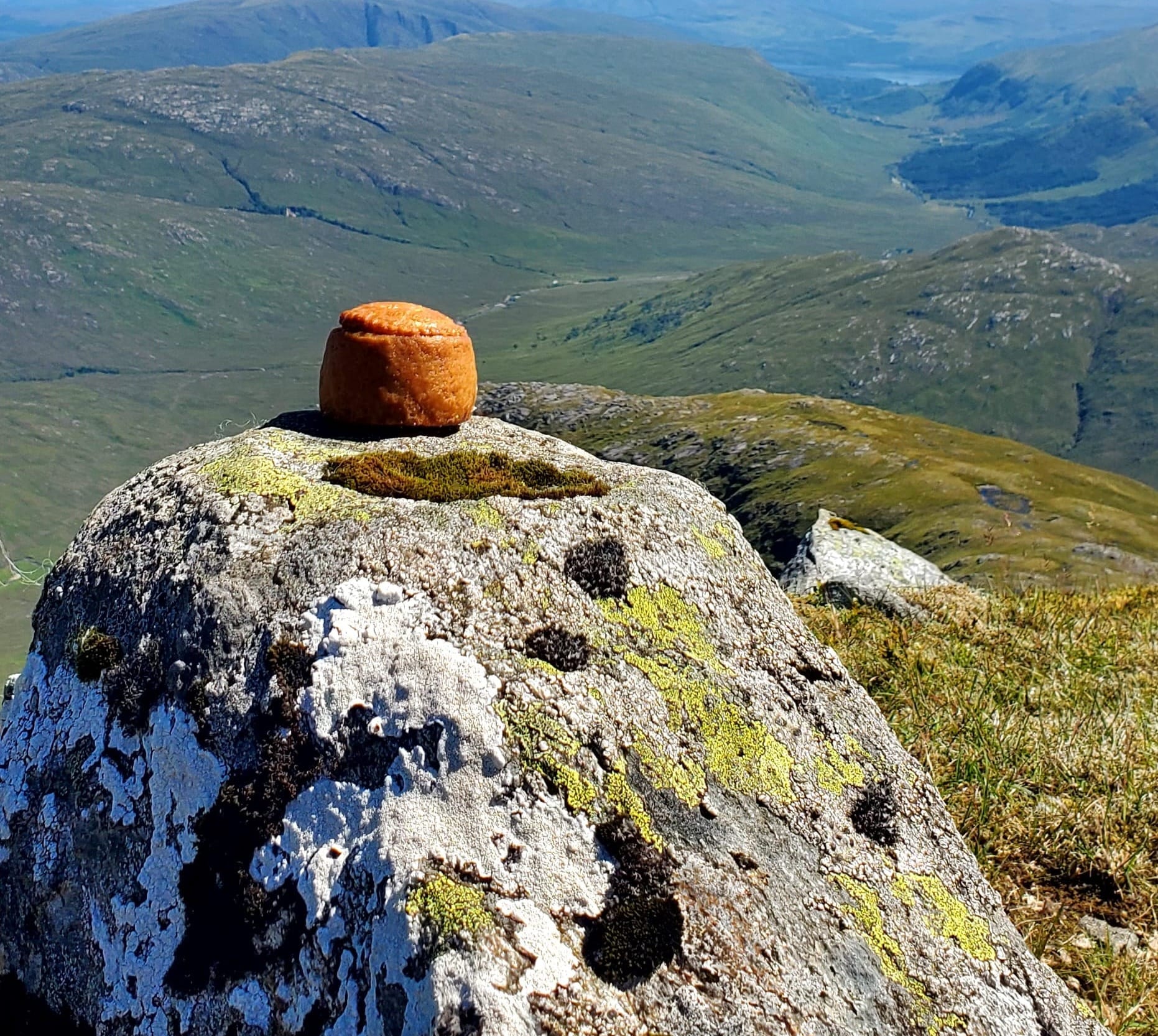
The hills here rise from the bog like giants. It’s an intimidating sight, the unrelentingly steep slopes, stony scree glittering like silver in the sun.
Our first ascent – Beinn Shiantaidh – delivered the promised scree-fest. Vast fields of loose stone made for slow going – two steps up, and a slide back.
Watching Storm skip lightly on the precipitous slopes did nothing for morale. Oh to have four legs at times like this.
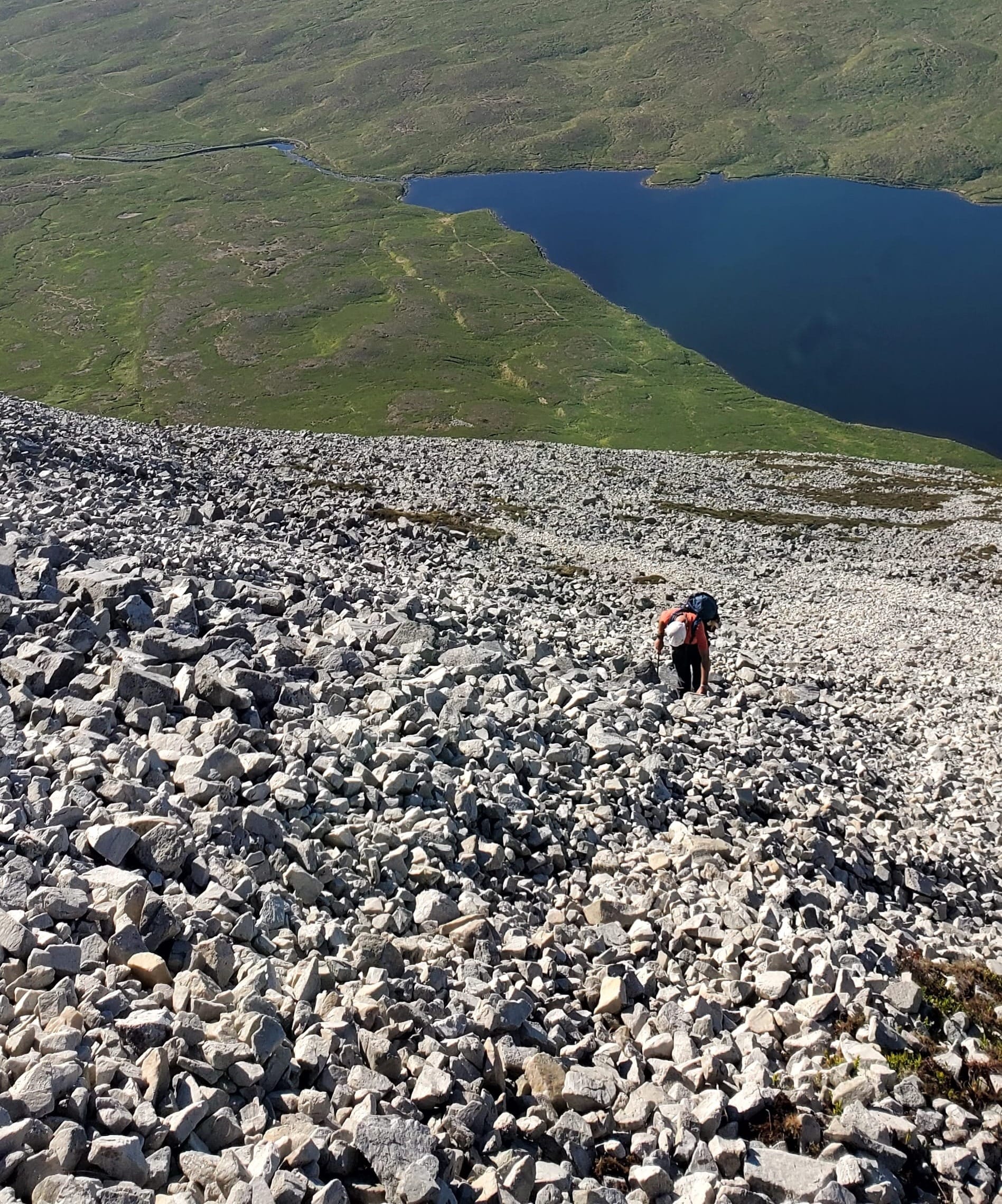
The sun now well up, we stopped often to rest and drink. To protect his head, Ron donned a knotted hanky. It was like being on the hill with Albert Steptoe.
Around the three hour mark, we reached the summit. The views were glorious, not a cloud in sight.
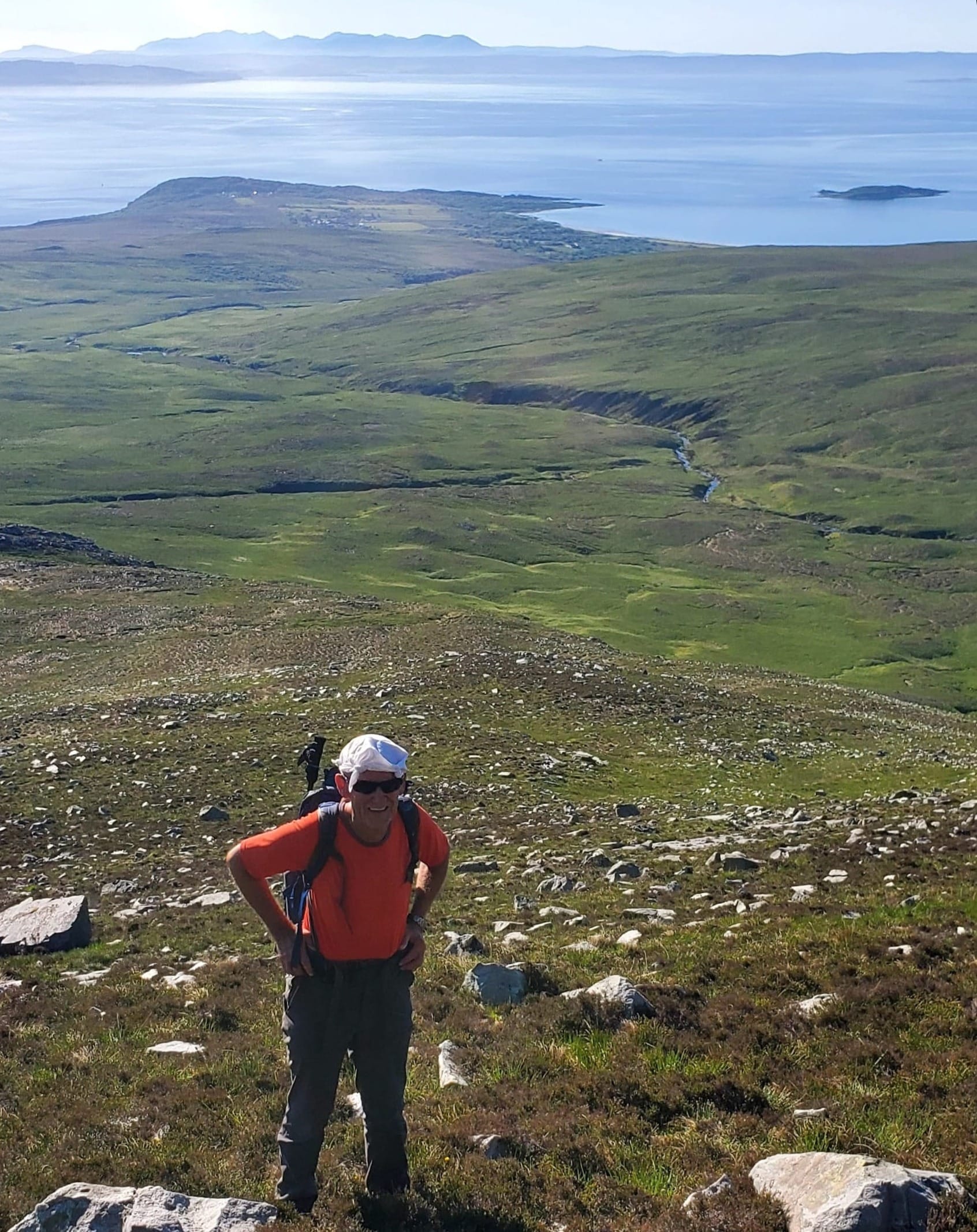
We didn’t hang about though. The next hill – the Corbett – filled our vision. It was a hulking brute and would require a knee-wrecking, lengthy descent and a longer, steeper climb to reach. It’d take at least two hours.
Jura's red deer join the adventure
A snack, some water and we were off. We carefully descended a grassy and rocky rake to the low saddle between the peaks and watched in awe as a herd of red deer thundered across it. A magnificent sight.
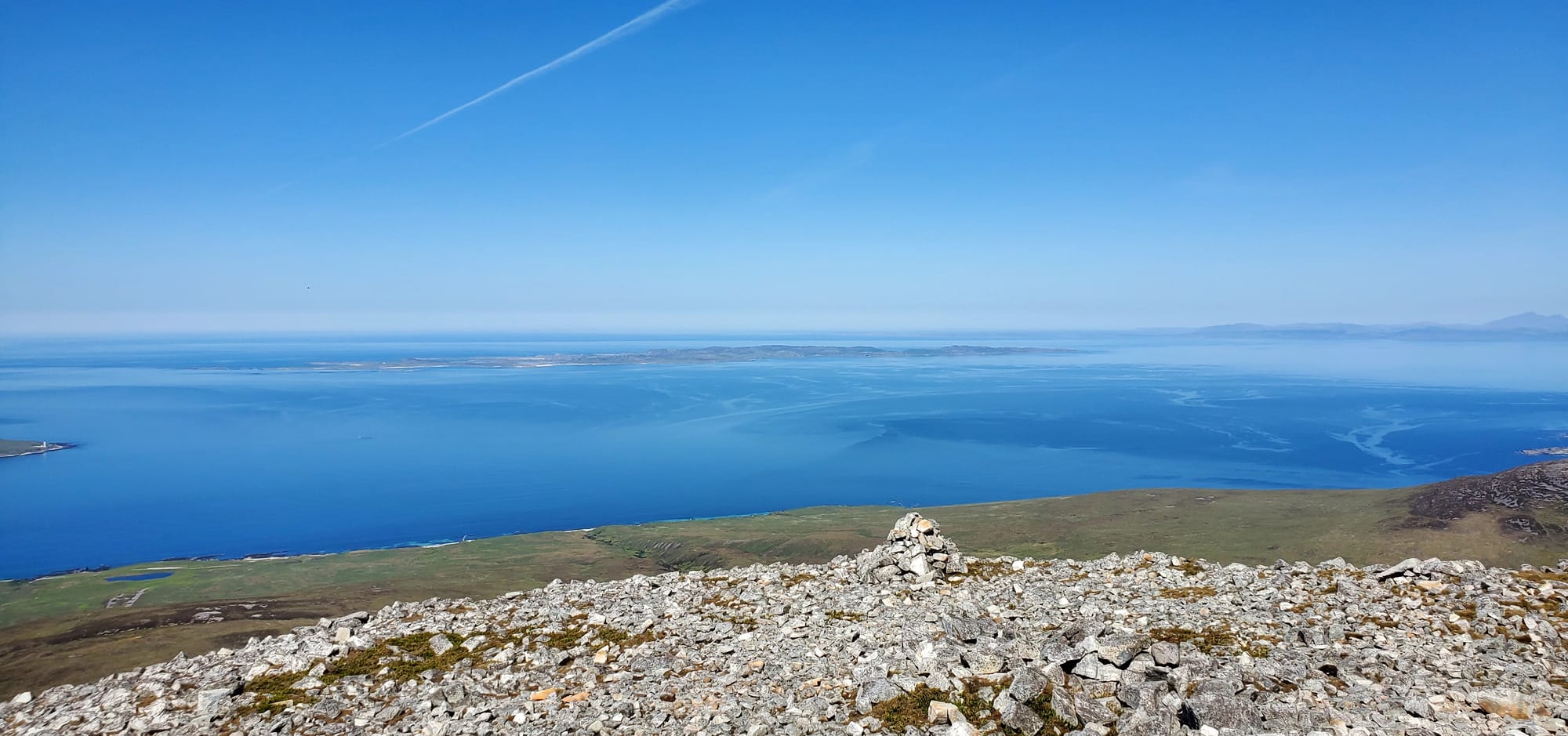
The climb that followed had less scree but was very steep and it was with a sense of relief that we finally reached the gnarly top. We lingered, appreciating the sun’s warmth, the stillness, the silence.
Idyllic island views
The views were immense. North lay the island of Colonsay, beyond that Mull, its mountains glowing blue in the heat haze. The sea was flat calm, azure in the depths, green-tinged at the shore. It was idyllic.
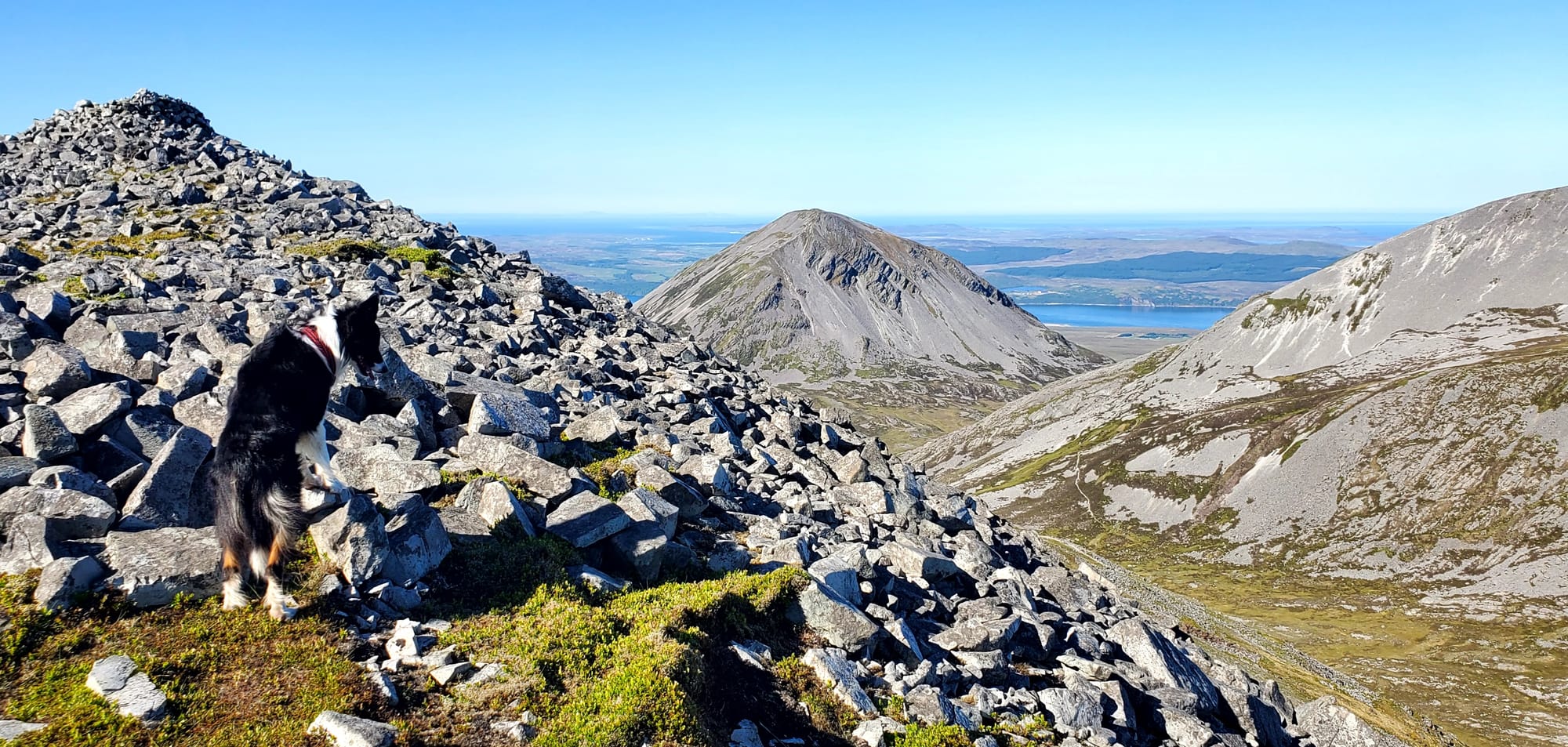
We enjoyed a lazy lunch and a wee lie down and could have stayed there all day. But another hill beckoned, Beinn a’ Chaolais.
The descent from the Corbett took great care – and a lot of time. Huge boulders gave way to yet more precipitous scree slopes.
We had to cautiously and slowly pick our way down.
Ron had slowed, and we re-grouped at the bealach. He’d had twinges of cramp. We rested and thought. We had a decision to make.
There was no way Ron could climb another peak when every step sent his thighs into spasm. The long walk out the glen would be tough enough.
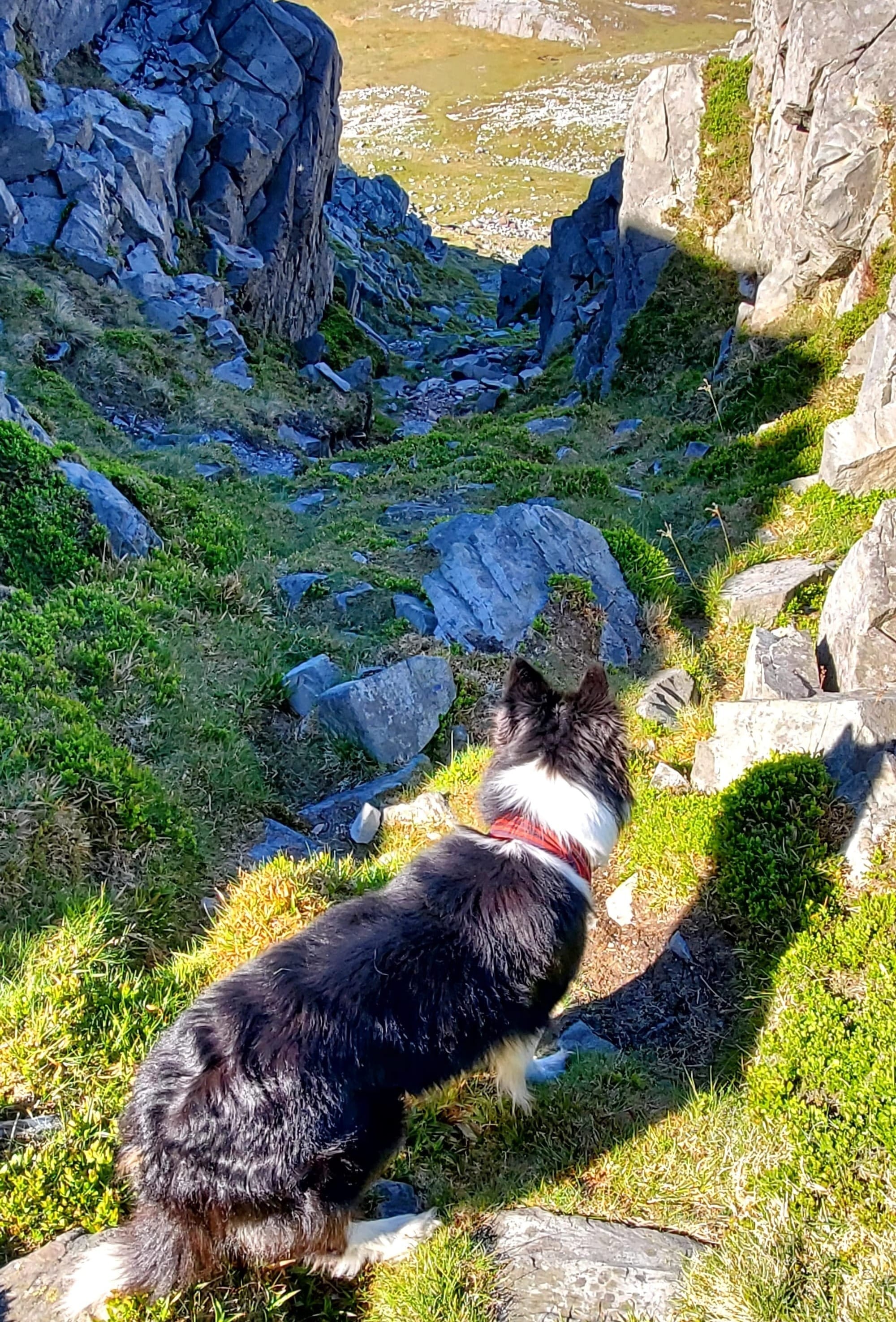
Storm and I could continue, but it’d add at least two hours to our day. It was hot, we were tired, and the final hill would quite possibly mean missing the last Islay ferry.
It was an easy decision. We’d had a good day and leaving the final hill gave a reason to return, if one were needed. We shouldered our packs and made for the van.
Crashing back to reality
Remote as Jura seems, civilisation is never far away – as I found out when I got an email from ferry operator Calmac. Repairs to a boat meant we’d have to change our sailing back to the Saturday lunchtime boat instead of Sunday.
Back on Islay, we got a prime, shoreside spot at the campsite. It was late evening by the time we had set up, showered and changed. We were knackered.
Our plans for a gourmet dinner and beers were scuppered. Instead, we had rehydrated camping meals in the van, washed down with some well-deserved red wine.
Views to last a lifetime
We threw open the camper’s rear doors to enjoy a perfect picture-framed view of the sea – it’s better than any telly.
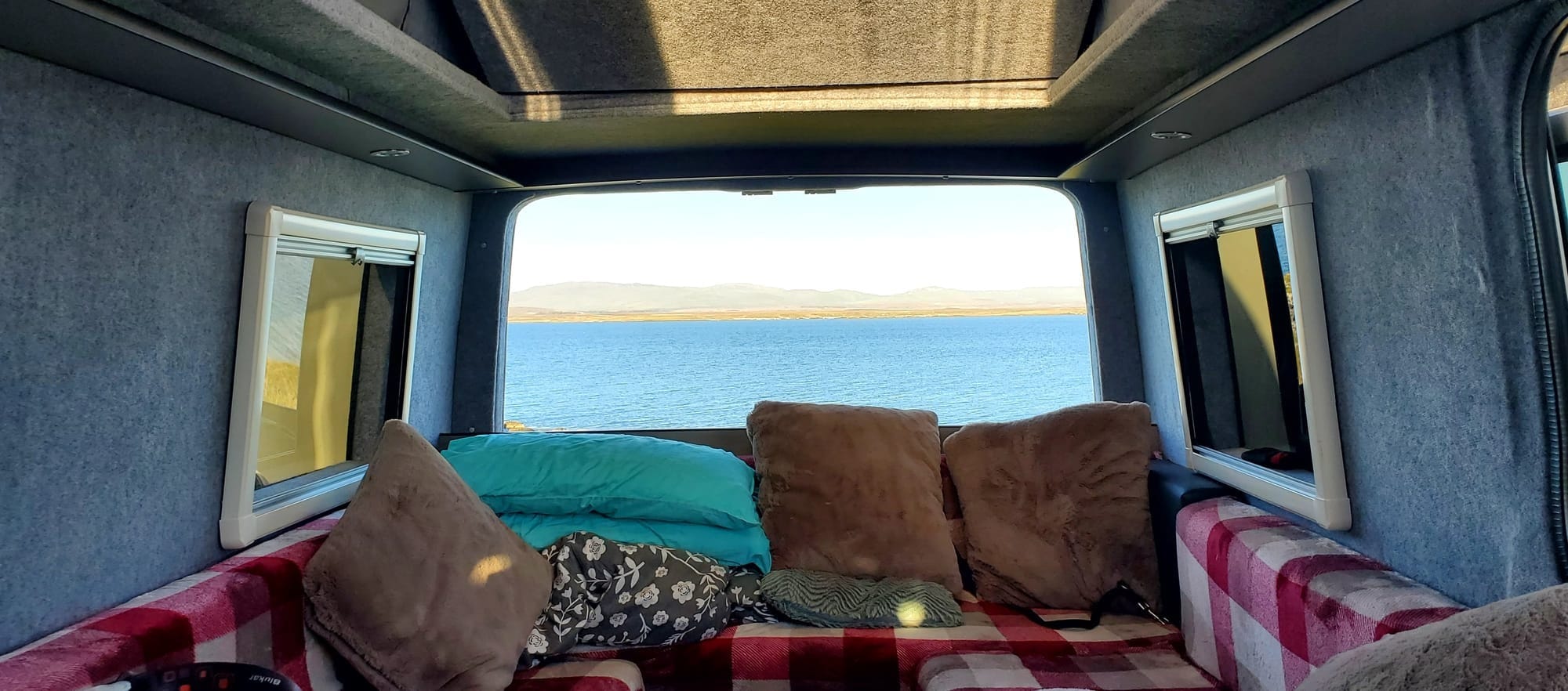
There’s something about the light on Islay – it’s different to almost anywhere else I’ve been. Maybe it’s to do with the interplay between sand, water and sun, and the lack of hills that makes the skies seem vast.
Magical island light
It’s hard to describe. The light lends the air a milky, ethereal quality. It’s almost more a “feeling” than anything else.
I sometimes wonder if Islay’s a “thin place”, a term in Scots folklore that describes a location where the veil between the overlapping realms of earth and heaven is at its finest.
I’ve experienced similar in a few places in Scotland, Sandwood Bay in the north-west, the isle of Iona.
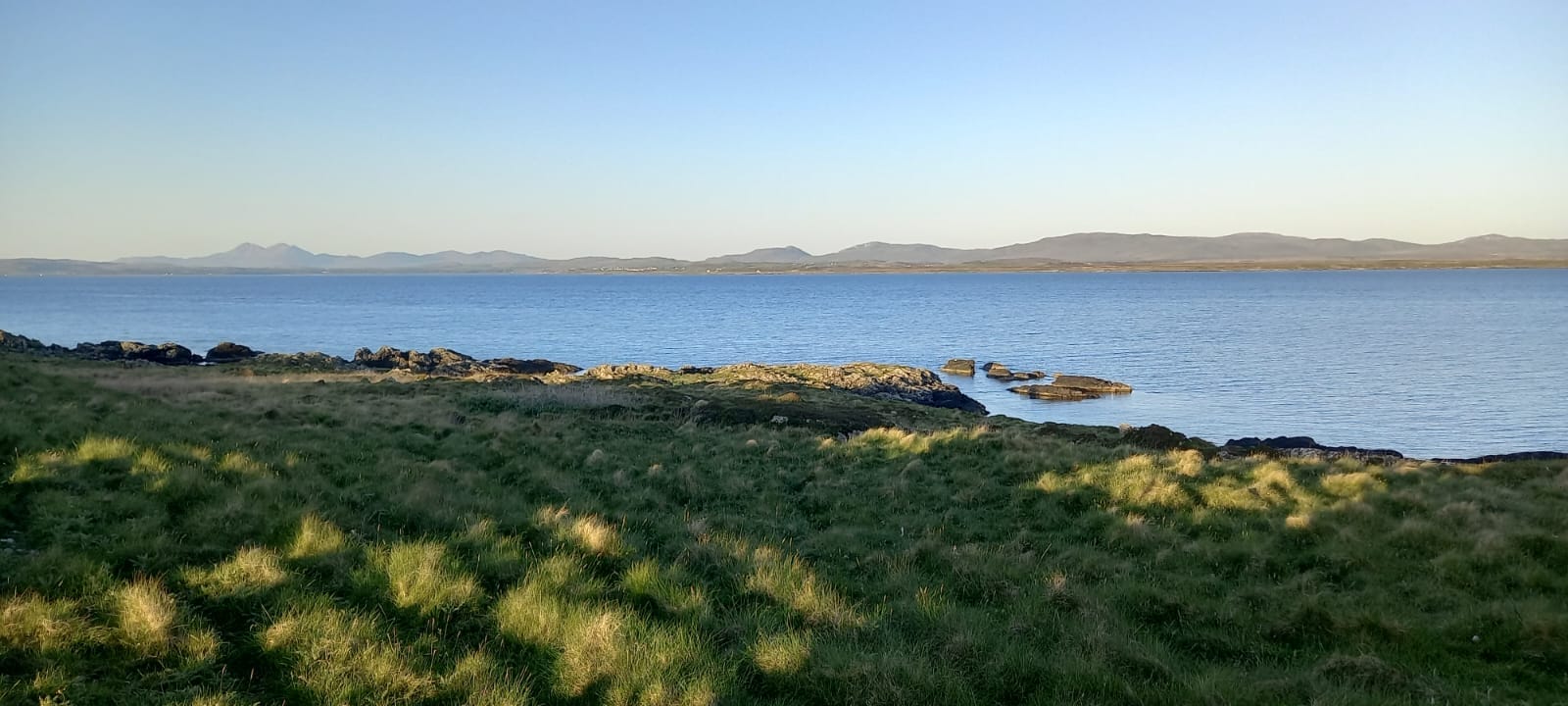
We were disappointed our trip would be cut short – we’d plans for the next day on Islay, not least a visit to my favourite pub, the Lochindaal Hotel in Port Charlotte.
It’s a rough and ready wee place, but serves the best seafood platter I’ve ever eaten – lobster, crab, langoustine, mussels, all fresh out the water. Maybe next time.
With that thought in my head, I drifted off to sleep. Tomorrow the real world beckoned once more.
Scots Snippet
Word of the Week
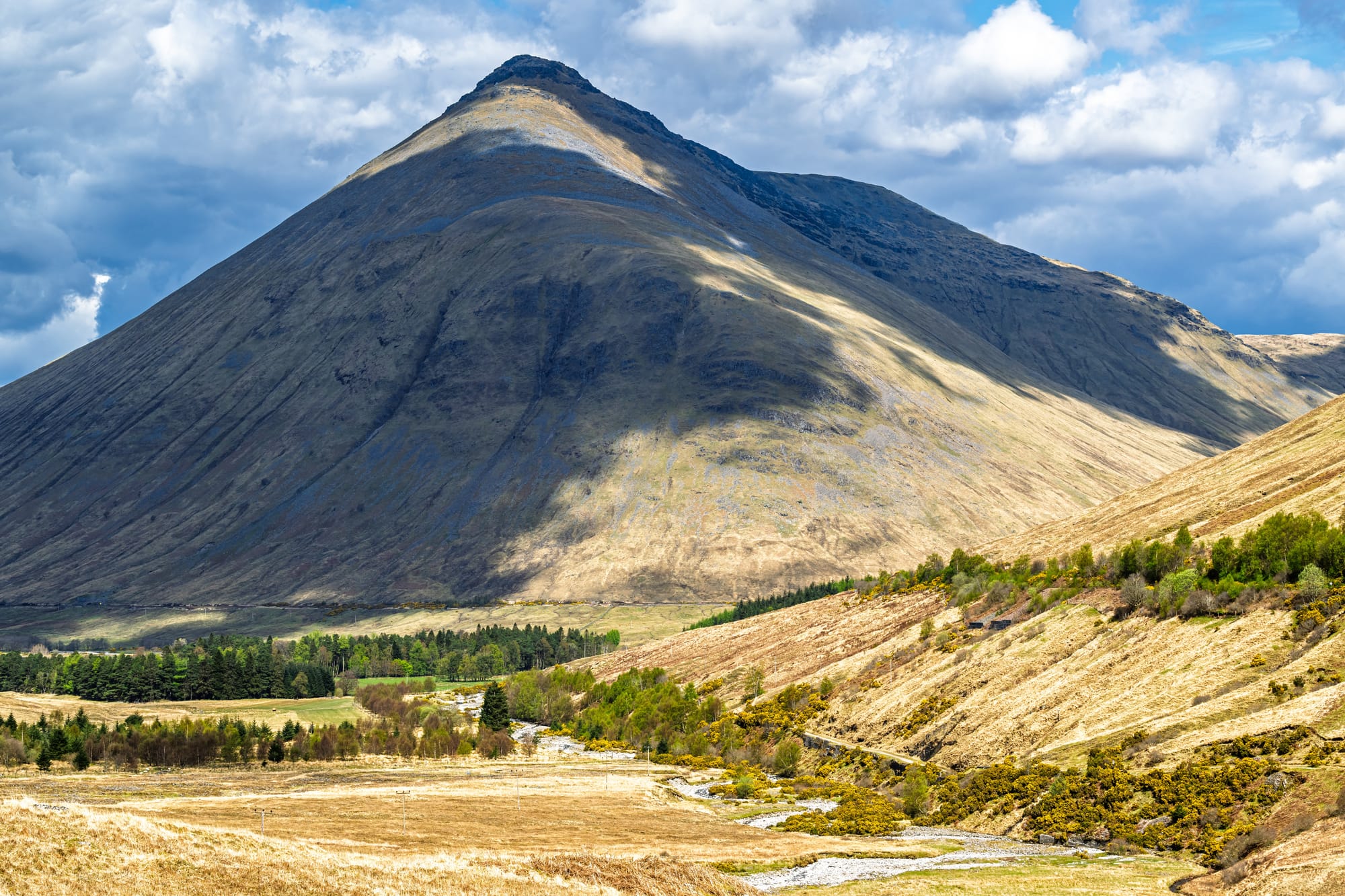
"Ben"
(n.) - a mountain.
From the Gaelic "beinn", meaning mountain, this word is found throughout Scotland's wild landscapes.
It can also mean to go through (a house).
To share your own Gallivants, head to our Instagram!
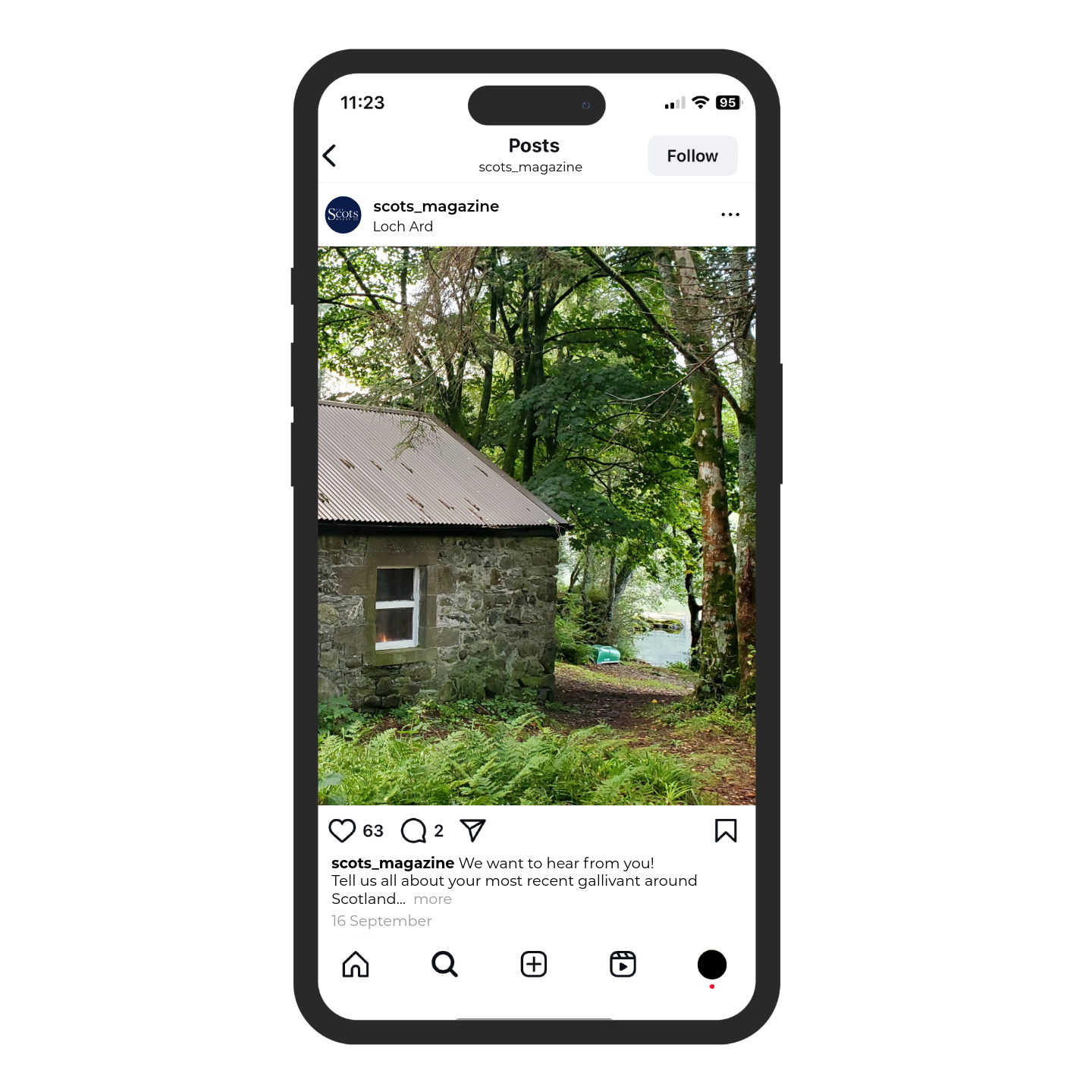

Member discussion